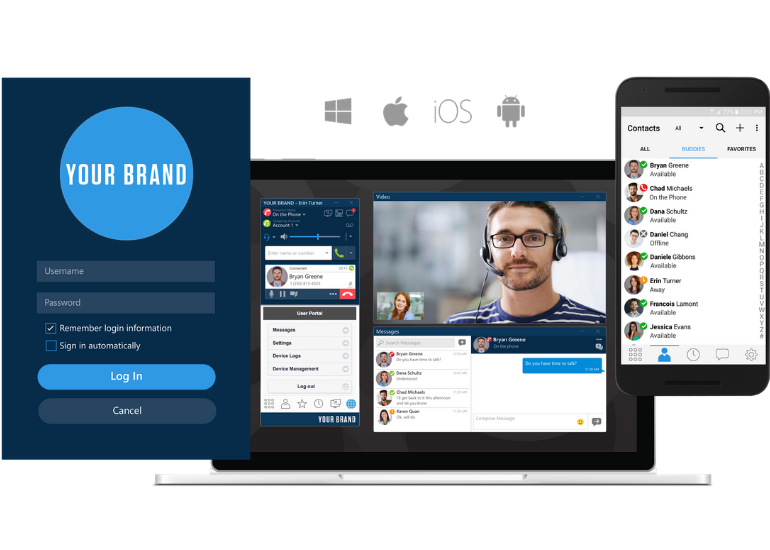 Many organisations, big or small, are struggling with this simple question — “What’s the strategy for collaboration for your enterprise?” While some answers have been sprinkled with technological pizzazz — “collaboration is our productivity software”; others have doled out some pretty standard definitions- “Collaboration is unified communications (UC)” plus some bells and whistles and so on.
Many organisations, big or small, are struggling with this simple question — “What’s the strategy for collaboration for your enterprise?” While some answers have been sprinkled with technological pizzazz — “collaboration is our productivity software”; others have doled out some pretty standard definitions- “Collaboration is unified communications (UC)” plus some bells and whistles and so on.
However, when you switch over to the other side and ask your end users, you will get a completely different answer. Collaboration isn’t a technology as much as it isn't a solution. A closer definition could be — ‘workflows’ that evolve specifically to get required tasks done and where everyone involved is motivated to reduce friction between the moving parts and individual contributors. This seems to be a more ‘closer to truth’ definition of collaboration. These can also include clients and customers, who are often spread across geographies and time zones.
Want to know what’s the right collaboration strategy for your enterprise? We have created a 3-step roadmap that can help you attain collaboration nirvana:
1. Improve workflows and reduce friction

To get to the bottom of this mystery, we first need to get the basics right. How is collaboration useful for end users? Any collaboration solution needs to improve the workflows that challenges them the most. It must eliminate bottlenecks, reduce human errors, remove complexities or shorten processes, while boosting both transparency as well as flexibility. The ideal would be if it gets tech out of the way, leaving the people with each other and the work. It’s no secret today that traditional UC and productivity vendors (who are now positioning themselves as collaboration players) are struggling to meet these user needs.
Enterprise users look instead to consumer tech and the new entrants in the collaboration space. They seem to have got it right by offering solutions which are easy-to-use, adaptable, quick to evaluate, simple to deploy and cost effective. And the end result has been magical — a streamlined workflow within a consistently beautiful user experience.
However, this isn’t as easy as it sounds. Technical decision makers, architects and service providers within enterprises are struggling between warring incumbent vendors and resourceful, demanding end users. So the next step in this path would be to delve deeper into common collaboration dilemmas and look for possible solutions.
2. Choose integrations that make the biggest difference to your workflows

A common grouse that enterprises voice about their unified communications (UC) and enterprise productivity vendors is that they are a ‘jack-of-all-trades’ i.e. they have a collaboration app for everything but might not be great at anything. So, what should the next call of action for enterprises be? Should they just embrace better alternatives?
Chances are that your vendors have expertise in their traditional solutions. Since you are also well-aware about their enterprise credentials, in terms of availability, scale, compliance, etc. you appreciate their service and trust them. Moreover, it’s an investment that you and your vendor are mutually tied up in. Having said so, it’s imperative that you make the switch when:
-
the state of the art is shifting faster than your vendor can adapt
-
their latest collaboration solution elements are more likely to be bought than built in-house and may be no better integrated than a third-party application
-
the process of integration or assimilation is painfully exhaustive and time consuming
Want better workflows that channel greater creativity, responsiveness, productivity and all-around increase efficiency for workgroups or departments? Choose a new-generation vendor who can collaborate with you on the integrations that will make the biggest difference to your workflows. By scaling those workflows across the business, it can help make a major difference for the bottom line.
3. Bend to the unique requirements of the entire user base

Be it one-to-one or group chats, team messaging is still a huge part of any workflow. The younger and tech savvy are more inclined to adopt a mobile communications app or join a video conference via a link. But the hesitance is poignant for the older demographics. For such a simple dish as a collaboration tool, though the list of ingredients on paper appear to be similar, a unique flavor needs to come out after the bake. In such a scenario, you don’t need to choose one flavor over another (eg. Slack over Microsoft Teams). Instead, why not opt for a flavor specifically created for your business, your users and your workflows?
If few of your employees just want to dial, while others want video calling and team chat or live collaboration rooms, the winner is the solution that brings a dynamic and responsive user interface to collaboration. So that everyone from age 18 to 70+ can leverage the same tool, which caters to their workflows. And even if this means deploying a single interface, so be it, because the best solution for your enterprise will be the one that addresses different requirements of the entire user base.
4. Escape the ‘Hard vs soft/ cloud vs on premises/ fixed vs mobile’ debate
 Enterprises are better off opting for the collaboration software that embraces all platforms to deliver a consistent user experience. Consider this scenario: It’s 10 am and you are video conferencing with your colleagues. But instead of the camera, they are engrossed with mobile devices on their laps. Because that’s where they find that the real work gets done. Experienced this, haven’t we?
Enterprises are better off opting for the collaboration software that embraces all platforms to deliver a consistent user experience. Consider this scenario: It’s 10 am and you are video conferencing with your colleagues. But instead of the camera, they are engrossed with mobile devices on their laps. Because that’s where they find that the real work gets done. Experienced this, haven’t we?
When work is getting ever more flexible, distributed and mobile, it changes the expectations for the workplace and the nature of work as a whole. Changes in demographics and work patterns suggest that the days of the desk phone, the on-premises PBX or even the telepresence suite in enterprises are numbered. Ultimately mobility, the cloud, apps and softphones on smart devices seem to be the order of the day for this new style working. But how do you achieve this on your terms?
The first step is freezing investment in still-useful, on-premises solutions or business critical infrastructure and choosing the cloud to pioneer innovative new collaboration options. When it comes to telephony, the market is flooded with new collaboration solutions. This makes it possible to integrate cloud-based conferencing and messaging with on-premises PBX in-house calling. This approach will not only help you to mitigate your compliance and continuity risks, but will also help you test and learn as you evolve. And gradually, the balance can shift towards ultimately addressing all your needs from the cloud.
 A one-size user interface won’t fit all needs when you have committed users unwilling to give up their desk phones or millennials unsuitable for using traditional devices. With large enterprises and financial institutions going mobile and BYOD, employees want to be empowered with tools that help them communicate with colleagues and customers using only mobile devices. If your employees are working from home on Chromebooks or virtual endpoints, you have yet another, different set of users with similar but not identical workflows. The two newer deployment scenarios must work in conjunction with the old school, enterprise-based desktop deployments.
A one-size user interface won’t fit all needs when you have committed users unwilling to give up their desk phones or millennials unsuitable for using traditional devices. With large enterprises and financial institutions going mobile and BYOD, employees want to be empowered with tools that help them communicate with colleagues and customers using only mobile devices. If your employees are working from home on Chromebooks or virtual endpoints, you have yet another, different set of users with similar but not identical workflows. The two newer deployment scenarios must work in conjunction with the old school, enterprise-based desktop deployments.
In such cases, the role determines the workflows which in turn determines the choice of tech. However, enabling this kind of elasticity would involve a high cost. Choosing soft over hard — collaboration software that embraces all platforms with a consistent user experience — and prioritizing cloud over on-premises deployments, can help mitigate this.
 In short, the path to collaboration nirvana can be difficult to navigate. Traditional UC players bringing solutions to market are more focused on driving their own agendas of vertically integrating their own offerings, rather than being inclusive of other solutions. On the other side, specialist vendors in one facet of collaboration are struggling to offer holistic solutions that meet an enterprise’s broad needs. Fortunately, for today’s users, the best path forward is creating a cohesive collaboration strategy - by choosing offerings that combine the entire sphere of communications and collaboration solutions in a dynamic and customizable user experience.
In short, the path to collaboration nirvana can be difficult to navigate. Traditional UC players bringing solutions to market are more focused on driving their own agendas of vertically integrating their own offerings, rather than being inclusive of other solutions. On the other side, specialist vendors in one facet of collaboration are struggling to offer holistic solutions that meet an enterprise’s broad needs. Fortunately, for today’s users, the best path forward is creating a cohesive collaboration strategy - by choosing offerings that combine the entire sphere of communications and collaboration solutions in a dynamic and customizable user experience.

Looking to provide an unbeatable user experience? CounterPath delivers platform solutions and Unified Communication (UC) clients that enable over-the-top voice, video, messaging and collaboration services, providing the best user experience on a wide range of devices via fixed or mobile networks. Enable your users to seamlessly communicate using one intuitive interface on any device with our fully integrated UC collaboration suite. Our Softphone SDK kits leverage our globally deployed Bria® technology and enable you to create unique differentiated offering within your own platforms. Enhance your solution and service offerings by customizing, white-labeling Bria softphones, managed by the award-winning Stretto Provisioning platform. Streamline distribution and management of the applications with our softphone solutions to provide high quality voice and video calls, instant messaging and presence, file sharing, and integration with Salesforce, as well as SMS and collaboration capabilities. Learn how we can help you provide a value-adding and differentiating service offering to your customers:






